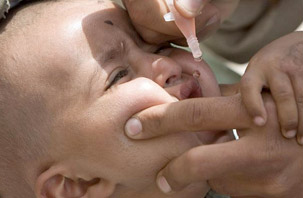- Added 12 Mar 2013
Setshaba Research Centre
Experience
Setshaba Research Centre, under the leadership of Dr Khatija Ahmed (Chief Executive Officer CEO)) and Dr Mookho Malahleha (Deputy CEO), is critically poised to execute HIV prevention trials, TB trials and other pharmaceutical trials. For the past 13 years, Dr Ahmed and her dedicated team have been working in this research environment and have effectively and efficiently managed large scale Phase III efficacy trials in Microbicides (e.g. Carraguard Trial) and oral Pre-exposure Prophylaxis (PrEP)(e.g. FEM PrEP).
Since the centre’s inception in 2004, Dr Ahmed has promoted an interest in both biomedical and social science research in relation to HIV prevention options, in particular identifying different prevention strategies for those most at risk of HIV.
Dr Ahmed has extensive experience in conducting large-scale efficacy and safety studies in the field of HIV prevention. She was the national PI and site investigator for the safety and effectiveness trial of the potential microbicide “Carraguard” with the Population Council. She also worked in collaboration with FHI 360, in the FEM PrEP clinical trial. She is currently the site PI for the FACTS 001 1% Tenofovir microbicide study.
Research interests
We have established important linkages with the Department of Health (DoH) and have a signed ‘Memorandum of Understanding’ (MOU) at the regional level. This includes permission to recruit and refer participants to the local clinics. The SRC has also established network links with various organizations for additional support and for the referrals of trial participants for further care.. The SRC also has long-term and sustainable relationships and communication processes with key members of the community.
Disease areas
- HIV
- Maternal Health
- Other
- TB
Completed Studies 1. Carraguard: Microbicide - Population Council (2004-2007) 2. FEM PreP: Oral Prep - FHI360 (2009-2012) 3. ACASI: Behavioral - Population Council (2007) 4. SBC preparedness: Mapping - FHI360 (2009-2012) 5. HSV 2: HSV 2 Treatment – Norvartis (2008-2009) 6. Diabetic Peripheral Neuropathic: Observational - Pfizer (2011) 7. Tyrosur study: Wound Healing - Engelhard Arzneimittel (2012-2013) 8. Impetigo: Impetigo Treatment - Galderma Inc (2012-2013) 9. PrEP & Risk Compensation: Behavioral - FHI 360 (2012-2013) 10. PreP & Adherence: Behavioral - FHI 360 (2013) 11. TESEC 05: TB Diagnostic - Statens Serum Institut (2012-2013) 12. TESEC 07: TB Diagnostic - Statens Serum Institut (2012-2013)13. FACTS 001: Microbicide - CONRAD (2011-2015) 14. Group B streptococcus: Observational – Norvatis (2013-2015) 15. CE/049/ACT: Wound Healing - Smith & Nephew (2015) 16. RSV (Season 1): RSV Vaccine – Novavax (2015 -2016) 17. TRIO: MPT Acceptability - RTI (2016-2017) 18. STAND Study - TB Drug therapy - TB alliance (2015 -2017) Ongoing Studies 1. HPV vaccine: HPV vaccine – Merk (2010-2018) 2. TB-018: TB Vaccine - Aeras/GSK (2014-2018) 3. MENACWY: Meningococccal vaccine - Pfizer (2014-2019) 4. ECHO: HIV risk with Contraception - FHI360/University of Washington (2015-2018) 5. HVTN 100: HIV Vaccine – DAIDS (2015 – 2018) 6. HVTN 108: HIV Vaccine – DAIDS (2017 – 2018) 7. HVTN 702: HIV Vaccine – DAIDS (2016– 2021) 8. HDT TB: TB Treatment - ACT4TB/ Aurum (2016 - Jul 2018) 9. Oral Candidiasis: Oral Candida Treatment – Aspen (2016 - 2018) 10. RSV (Season 2): RSV Vaccine - Novartis (2016 – 2018) 11. RSV (Season 3): RSV Vaccine - Novartis (2017 - Jul 2018)
Other information
SRC has contributed significantly to HIV prevention research by conducting high quality clinical trials with good quality data and high retention rates. This has been achieved in both medium- and high-risk women who can prove challenging to retain in care and follow-up - a testament to the credibility of the site. Participants for the previous Microbicide study (Carraguard) were recruited from the general population and for the Oral Prep study (FEM-PrEP) were recruited from high-risk areas where sexual transactions occur. The HIV incidence rate in the Carraguard trial was 3.6 per 100 person years (py) across all sites, with the SRC site having an incidence of 4.0 per 100 py. The FEM-PrEP study had an overall incidence rate of 4.9 per 100 py with the SRC site having an incidence of 6.0 per 100 py. The trial data for the two study populations shows a significant difference in the HIV incidence (4.0 per 100 py vs. 6.0 per 100 py), and clearly demonstrates the need for prevention options in our community. We have mapped out areas of high-risk including but not limited to bars, shebeens or taverns (informal and sometimes illegal drinking establishments), hostels, roadside areas and Sexually Transmitted Infection (STI) clinics.
Media

Documents
Contact this site
To: Dr Khatija Ahmed, Chief Executive Officer at Setshaba Research Centre
Please Login to contact a site.